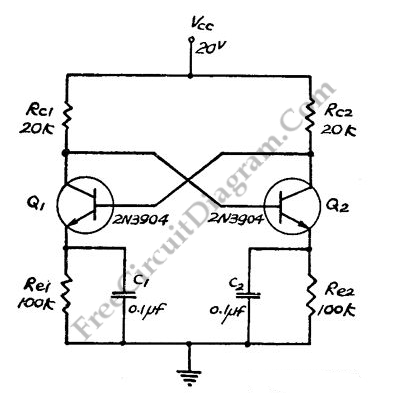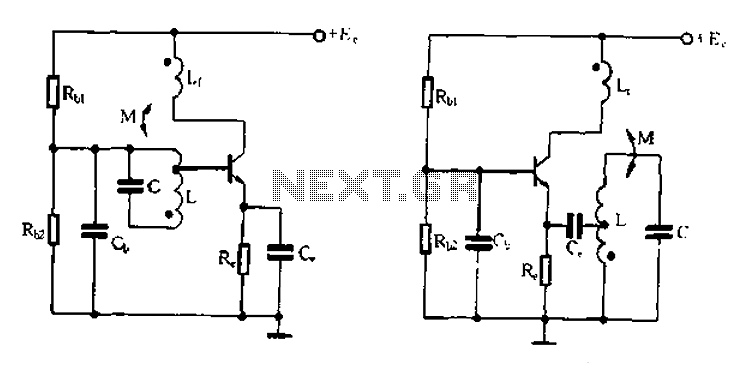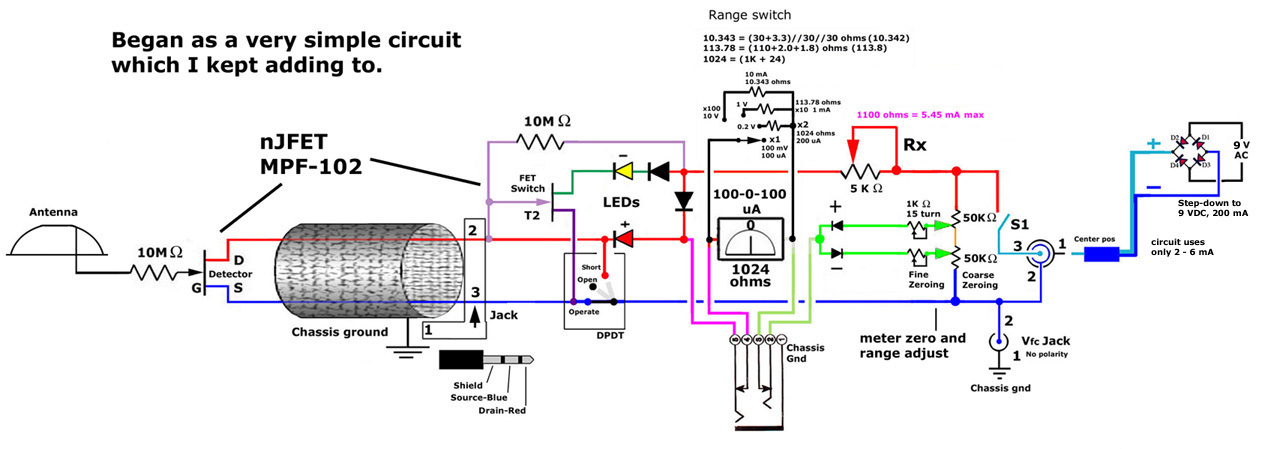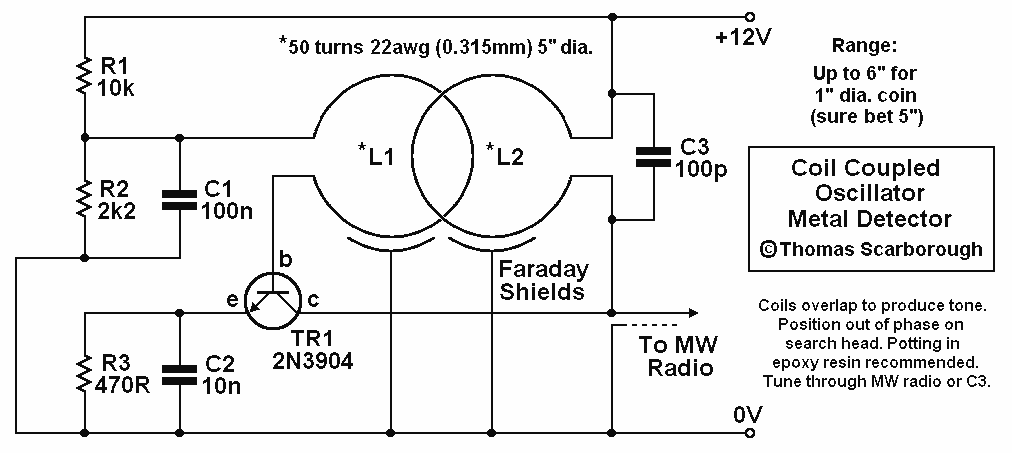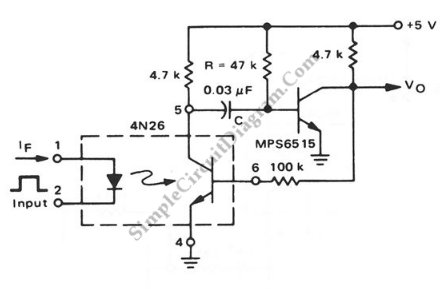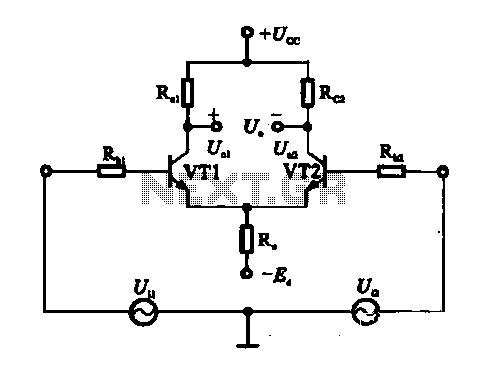
Jfet ac coupled integrator
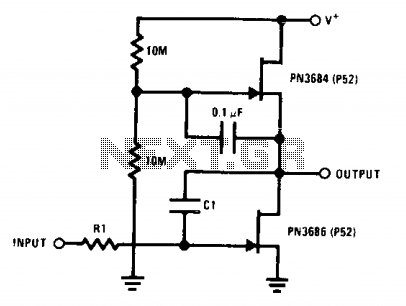
This circuit employs the "µ-amp" technique to achieve a very high voltage gain. By using a CI in the circuit as a Miller integrator or capacitance multiplier, this simple configuration can manage very long time constants.
The described circuit primarily focuses on utilizing operational amplifiers (µ-amps) to achieve significant voltage amplification. The integration of a Miller integrator or capacitance multiplier enhances the circuit's ability to handle extended time constants, making it suitable for applications requiring precise signal processing over longer durations.
In the schematic, the operational amplifier is configured in a feedback arrangement that allows for high gain. The input signal is fed into the non-inverting terminal, while the inverting terminal is connected to a feedback loop that includes both resistive and capacitive components. The configuration of these components is crucial as it determines the frequency response and stability of the circuit.
The Miller integrator function is achieved by introducing a capacitor in the feedback loop, which influences the phase response and gain characteristics of the circuit. The capacitor's value, in conjunction with the feedback resistor, defines the time constant of the circuit, allowing it to integrate the input signal over a specified duration. This is particularly useful in applications such as signal smoothing, filtering, and waveform generation.
Overall, the circuit's design emphasizes simplicity and effectiveness, leveraging the properties of operational amplifiers to produce a high-gain output while managing long time constants efficiently. Proper selection of component values is essential to optimize performance and ensure the desired response characteristics are achieved.This circuit utilizes the "µ-amp" technique to achieve very high voltage gain. Using CI in the circuit as a Miller integrator, or capacitance multiplier, allows this simple circuit to handle very long time constants. Here is the circuit. 🔗 External reference
The described circuit primarily focuses on utilizing operational amplifiers (µ-amps) to achieve significant voltage amplification. The integration of a Miller integrator or capacitance multiplier enhances the circuit's ability to handle extended time constants, making it suitable for applications requiring precise signal processing over longer durations.
In the schematic, the operational amplifier is configured in a feedback arrangement that allows for high gain. The input signal is fed into the non-inverting terminal, while the inverting terminal is connected to a feedback loop that includes both resistive and capacitive components. The configuration of these components is crucial as it determines the frequency response and stability of the circuit.
The Miller integrator function is achieved by introducing a capacitor in the feedback loop, which influences the phase response and gain characteristics of the circuit. The capacitor's value, in conjunction with the feedback resistor, defines the time constant of the circuit, allowing it to integrate the input signal over a specified duration. This is particularly useful in applications such as signal smoothing, filtering, and waveform generation.
Overall, the circuit's design emphasizes simplicity and effectiveness, leveraging the properties of operational amplifiers to produce a high-gain output while managing long time constants efficiently. Proper selection of component values is essential to optimize performance and ensure the desired response characteristics are achieved.This circuit utilizes the "µ-amp" technique to achieve very high voltage gain. Using CI in the circuit as a Miller integrator, or capacitance multiplier, allows this simple circuit to handle very long time constants. Here is the circuit. 🔗 External reference
